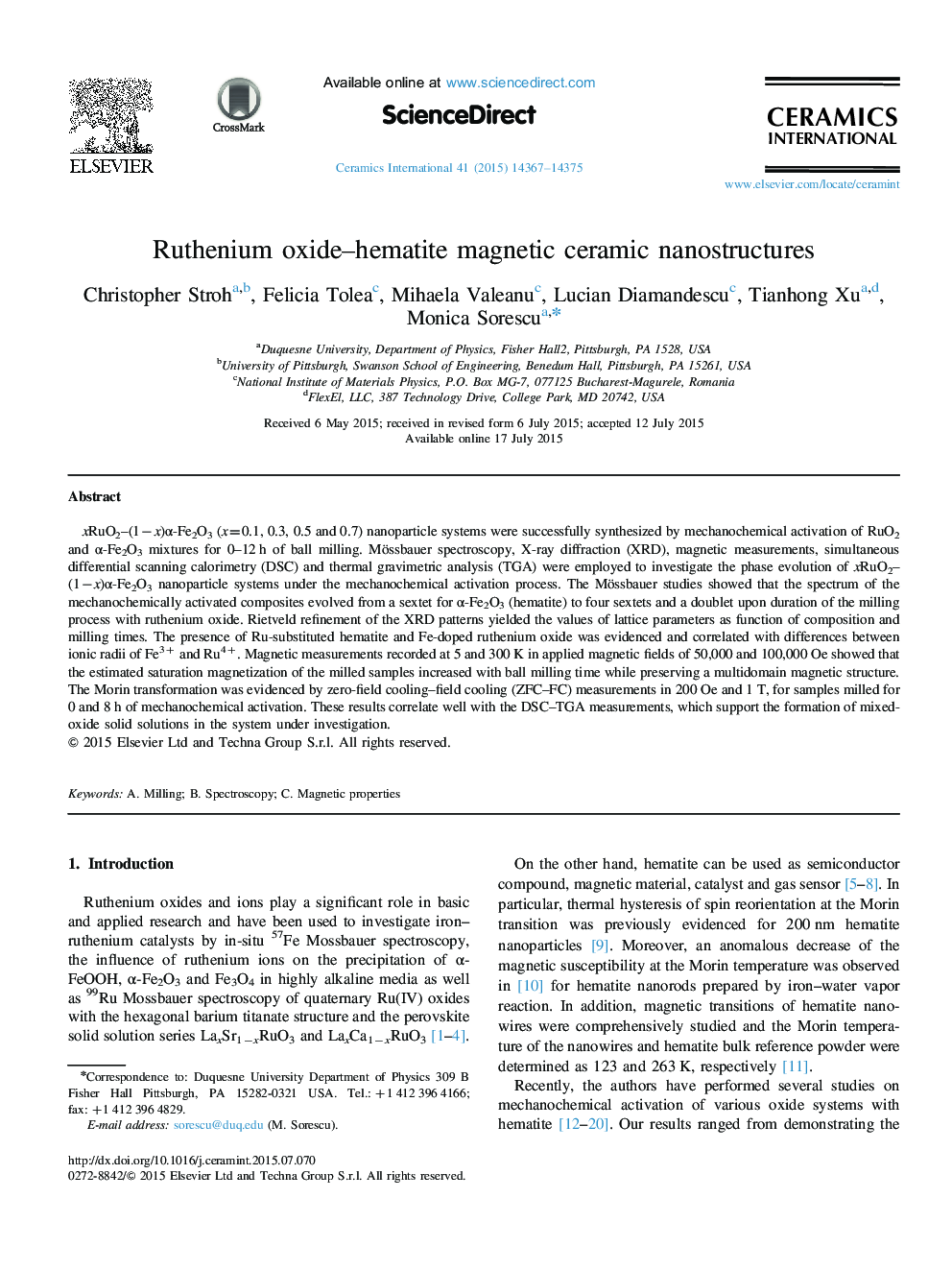| Article ID | Journal | Published Year | Pages | File Type |
|---|---|---|---|---|
| 1459352 | Ceramics International | 2015 | 9 Pages |
xRuO2–(1−x)α-Fe2O3 (x=0.1, 0.3, 0.5 and 0.7) nanoparticle systems were successfully synthesized by mechanochemical activation of RuO2 and α-Fe2O3 mixtures for 0–12 h of ball milling. Mössbauer spectroscopy, X-ray diffraction (XRD), magnetic measurements, simultaneous differential scanning calorimetry (DSC) and thermal gravimetric analysis (TGA) were employed to investigate the phase evolution of xRuO2–(1−x)α-Fe2O3 nanoparticle systems under the mechanochemical activation process. The Mössbauer studies showed that the spectrum of the mechanochemically activated composites evolved from a sextet for α-Fe2O3 (hematite) to four sextets and a doublet upon duration of the milling process with ruthenium oxide. Rietveld refinement of the XRD patterns yielded the values of lattice parameters as function of composition and milling times. The presence of Ru-substituted hematite and Fe-doped ruthenium oxide was evidenced and correlated with differences between ionic radii of Fe3+ and Ru4+. Magnetic measurements recorded at 5 and 300 K in applied magnetic fields of 50,000 and 100,000 Oe showed that the estimated saturation magnetization of the milled samples increased with ball milling time while preserving a multidomain magnetic structure. The Morin transformation was evidenced by zero-field cooling–field cooling (ZFC–FC) measurements in 200 Oe and 1 T, for samples milled for 0 and 8 h of mechanochemical activation. These results correlate well with the DSC–TGA measurements, which support the formation of mixed-oxide solid solutions in the system under investigation.
